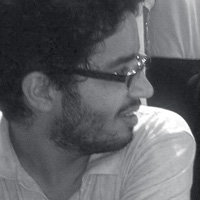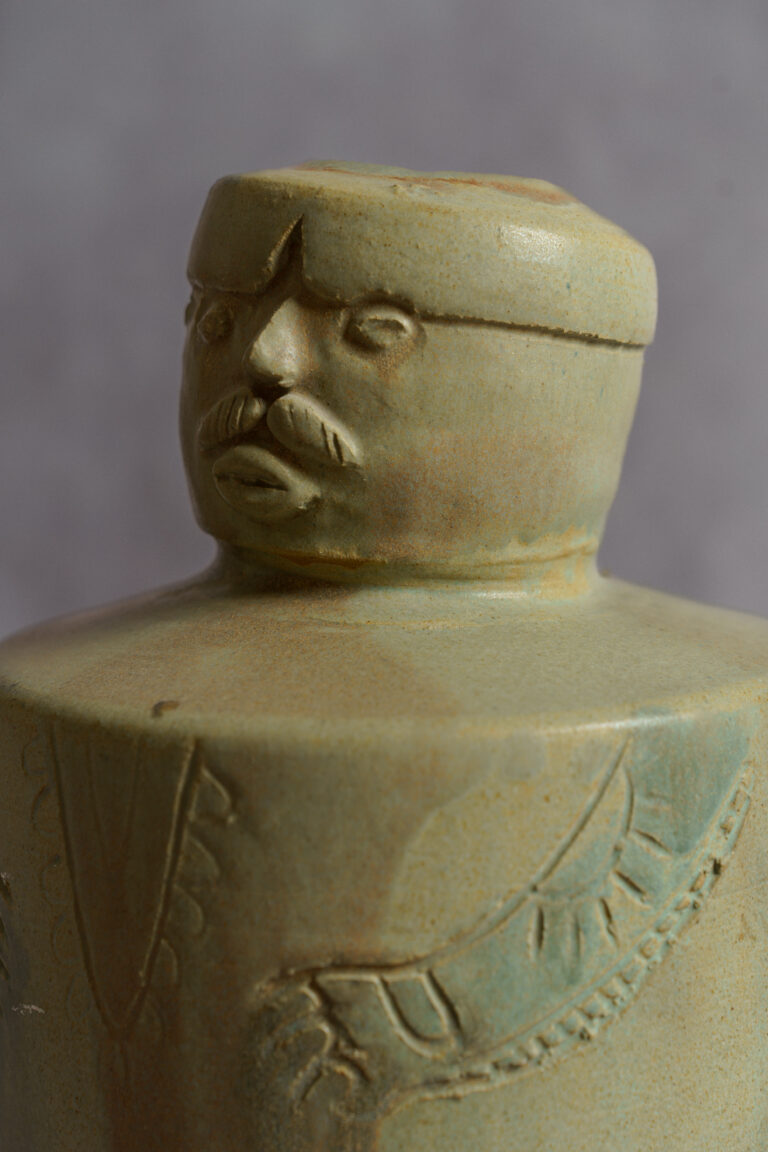
A film is made of cut and assembled images. Sometimes, the cut is so delicate we wander from one scene to another without noticing that focus has shifted from this corner to the opposing one, in a perfectly illusive move. But there are rough, sudden ones too. While still implying a continuum of action that unfolds in front of the camera, we can tell there is an interval between one scene and another.
In the late 1970s, Andy Warhol was working on his Screen Tests. Images were like pictures that lasted in time. The characters would be posing in front of a still camera. One of the most beautiful pieces of the series is one which depicts the Hollywood actor Dennis Hopper.
Hopper stands quite still himself, looking toward the lenses of the camera as if awaiting the passage of time. Suddenly, the image is interrupted by one of those violent cuts. Less than a second later, the scene reappears with no relevant modification. Still, between one frame and another, we sense the feeling of having missed something that was going on behind that darkness.
Several of Tatiana Blass’s works deal with that kind of interruption. Precisely marked intervals seem to tear away forms, objects, and environments that used to be complete. In one of them, horse legs made of metal or marble are so symmetrically distributed that they make us notice the absence of the animal’s body; or a room, like in Zona Morta (Dead Zone, 2007) that receives a white stripe separating its lower and upper parts. This gap suggests a recreated, farcical space that seems also to have lost some of its reality.

This is due to Tatiana’s lack of interest in reality – she speaks about illusion instead. About what seems to have been subtracted from the world when we put experiences into codes.
Since her 2005 collages, it has always seemed to me that those intervals imitated, in a way, a mental move we make when we convert the things we and others experience in life into an image, a story or a scientific description. It is as if the artist was showing us the lapses and unnoticed things that remain despite our efforts to make a discontinuous, simultaneous, unfathomable series of events into coherent relations, properly narrated with a beginning and an end, with causes and consequences.
In a way, it was as if the artist, right in front of our eyes, was doing and undoing the schemas of illusion. Of rationalistic illusions, above all, that causes us to take the description of something for the truth about. In the intervals between, even the best accounts would be eclipsed, become obscure. In this sense, the most delusive of illusions would be the ones that claimed their own likeness to reality. The ones that explained things as if insisting: ‘this is the way things are’.

In her last exhibit at the Museum of Modern Art of Bahia, she pictured dogs everywhere: in paintings, drawings, volumes and texts. In these we discover, as a matter of fact, that the animals, as Goya’s dog, are blind. They get to move around by drawing on their other senses. Tatiana is unambiguous: “they are blind dogs that cannot be trained to become guides. They are everyday actors who wander about the scene with no predetermined behaviour.”
In the screens, they appear on a stage, sometimes with an audience. It seems to me that such a subject is directly related to the artist’s interest in illusion. Nevertheless, when we look at the two sculptures present in the exhibit, images became more violent, wild, and corrosive. Those are hyper-realistic sculptures made of wax and metal. Both pieces look very much like the animals; they are perfect copies of them. They imitate the hairs, the rib marks, and the details of the dog’s skin. The beasts look asleep, but they may be dead. There are two of them: a black one, and a golden and white one. The black one is made of wax, its head melts while it waits, undisturbed, its body to become a stain on the floor. It is a very disturbing sight.

The other dog looks more like a sculpture. Made on top of a brass stand, its inside is filled with white paraffin. The wrought metal shape depicts the head, the neck, the quarters and the tip of the dog’s paws. The paraffin does the rest of the job. As the exhibit goes on, the piece loses its form. The paraffin becomes a formless stain as well. The only things left are the metallic remains. In this way, that depiction of the dog parts is no longer only incomplete, as it was on occasion in other works, but also morbid.
Tatiana depicts death. It is not, though, the blind dog that dies, but the image that tries to make it last forever. In one of her texts the artist notes:
“I cannot hide my despair any longer, the ground swallows me up each minute! What is this useless friend good for who can’t do anything for me but watch with his morbid eyes my disappearing. bark, dog! bark!”
He does not bark, he disappears, leaving only a formless stain to remember him by. Something unnameable. Perhaps just like the delusion of comprehending the world in the face of tragedy, of the unavoidable. When the facts face us, there remains not much more than residues. Tatiana shows us blind dogs, but we are the ones who are in the dark.

(Translation: Joaquim Toledo Jr.)














